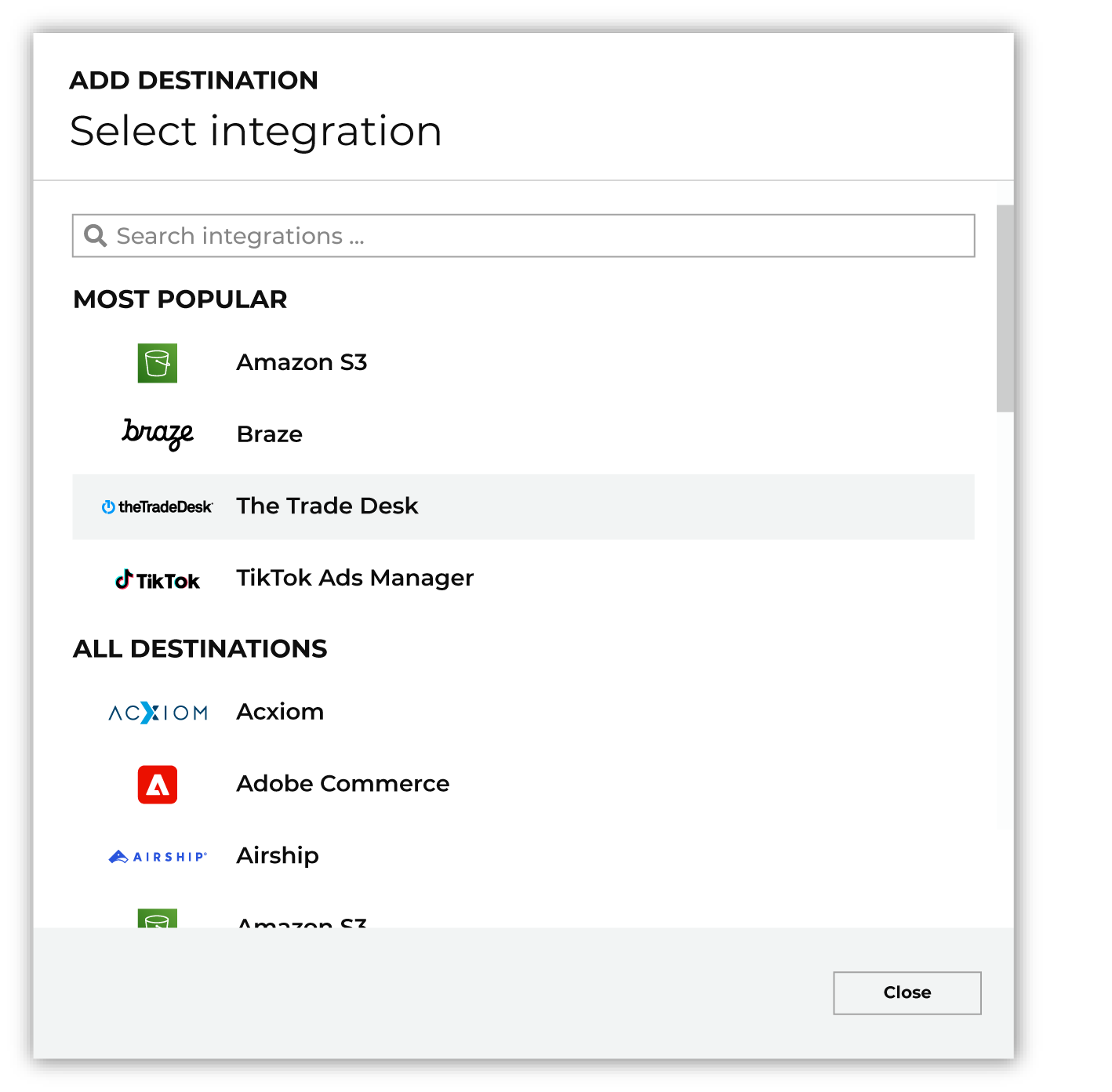Configure destinations for The Trade Desk 3P Marketplace¶
The Trade Desk is a platform for wide internet advertising and enables the use of Universal ID 2.0 for first-party paid media advertising.
Use this destination to monetize your brand’s UID 2.0-based audiences by making them available to advertisers for more granular targeting.
Get details¶
Review the following details before configuring credentials for The Trade Desk 3P Marketplace and before configuring Amperity to send email addresses, EUID, or UID2 tokens to The Trade Desk 3P Marketplace.

|
A UID 2.0 agreement and / or a European Unified ID (EUID) agreement . |

|
Credential settings Advertiser ID
Advertiser secret
Provider ID
Platform API token
|
Configure credentials¶
Configure credentials for The Trade Desk 3P Marketplace before adding a destination.
An individual with access to The Trade Desk 3P Marketplace should use SnapPass to securely share “advertiser ID”, “advertiser secret”, “provider ID”, and “platform API token” details with the individual who configures Amperity.
To configure credentials for The Trade Desk 3P

|
From the Settings page, select the Credentials tab, and then click the Add credential button. |

|
In the Credentials settings dialog box, do the following: From the Plugin dropdown, select The Trade Desk 3P Marketplace. Assign the credential a name and description that ensures other users of Amperity can recognize when to use this destination. |

|
The settings that are available for a credential vary by credential type. For the “tradedesk-3rd-party” credential type, configure settings, and then click Save. Advertiser ID
Advertiser secret
Provider ID
Platform API token
|
Add destination¶
Use a sandbox to configure a destination for The Trade Desk 3P Marketplace. Before promoting your changes, send a test audience, and then verify the results in The Trade Desk 3P Marketplace. After verifying the end-to-end workflow, push the destination from the sandbox to production.
To add a destination for The Trade Desk 3P

|
Open the Destinations page, select the New destinations button, and then select Orchestration. 
To configure a destination for The Trade Desk 3P Marketplace, do one of the following:
|

|
Select the credential for The Trade Desk 3P Marketplace from the Credential dropdown, and then click Continue. Tip If there are any issues with destination connectivity, an error message will display in the destination setup dialog. If the destination saves successfully, the connection is ready for use. |

|
In the “Destination settings” dialog box, assign the destination a name and description that ensures other users of Amperity can recognize when to use this destination. Configure business user access By default a destination is available to all users who have permission to view personally identifiable information (PII). Enable the Admin only checkbox to restrict access to only users assigned to the Datagrid Operator and Datagrid Administrator policies. Enable the PII setting checkbox to allow limited access to PII for this destination. Use the Restrict PII access policy option to prevent users from viewing data marked as PII anywhere in Amperity and from sending data to downstream workflows. |

|
Configure the following settings, and then click “Save”. Membership duration
Segment taxonomy ID (Required at orchestration)
|

|
After configuring this destination users may use:
|